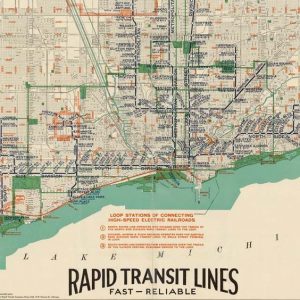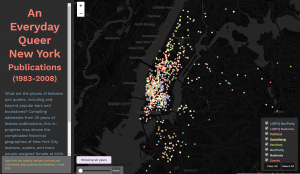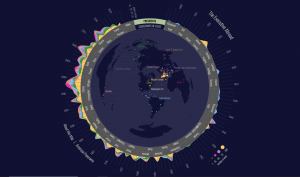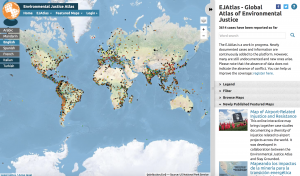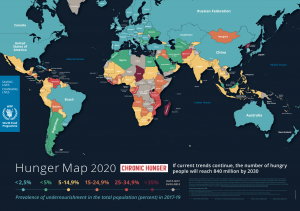
Source: https://www.ancient-origins.net/sites/default/files/field/image/watercolor-map.jpg
Map of the Week! Critique
The Historical Context
In May of 1587, a group of 100-odd English settlers sailed across the Atlantic to the island of Roanoke. Located on the coast of what is now known as North Carolina, John White, an explorer and watercolor artist, arrived in the summer of that same year, with hopes of establishing a functioning colony like many of the waves of European settlers had hoped for in the recently discovered, supposedly-promised land of resources and prosperity. The island of Roanoke had already been previously explored by the English the year prior but had to sail back to the mainland to gather more provisions before attempting to permanently settle on the island. However, this issue remained unresolved as within the first few months of their stay, the colonists supposedly begged White to return to England and bring back even more supplies. The group of colonists faced hardships of not being fully equipped to settle on new land due to drought and natural deterrents, but also dealt with aggressive two-sided conflict with nearby indigenous tribes. White left in August, just around one month after the group’s arrival. What was meant to be a short period of time away turned into a three year departure, due to England’s looming international war conflicts with Spain as well as possible French pirate attacks out on sea. John White did not return until August of 1590, only to realize the colonists, including his daughter, Eleanor White Dare, and granddaughter, Virginia Dare, were gone. What was left of the colonists, who showed no signs of leaving hastily or forced, was a single word carved into a wooden fence post: Croatoan.
Theorizing and the Possible Truth
While stories of missing and deceased colonists were consistent throughout early colonial American history, it is the colony of Roanoke that lives on as an exceptional historical mystery, due to the fact that the whereabouts and the fate of the colonists White left behind were never substantially, singularly proved. Historians have debated and offered extensive explanations as to what had happened to the lost colony, and even White attempted to sail a little further south along the coast to what is now known as Hatteras island in order to find the colonists himself before moving back to Europe and passing away another few years later. No mass graves have been found that could be linked to the lost colony, and the theories that many have proposed have possible explanations that range from being killed by local tribes in the area to even outlandish suspicions of aliens and cannibalism. However, one theory and one approach towards discovering the truth behind Roanoke involves the following map, created by John White, detailing the coast of North Carolina, and includes both Roanoke island and Hatteras island. While some have noted the map has stellar accuracy to current satellite imagery of the same area, taking into account natural changing coastlines, what is most intriguing and discussed about the map is that there is a four-pointed star shape hidden underneath a small patch of paper, seen in the zoomed in image of the map above. One prominent theory about this detail of White’s map is that perhaps it represents a fortified location in which the lost colony resettled, moving inland due to the struggles they were facing on the island. Other theories suggest that White had actually known their whereabouts and covered the shape to hide from English spies.
Counter-mapping, Deconstructing Maps, and Why Award This ‘Map of the Week’
The watercolor map created by the Roanoke colony’s governor deserves a spotlight as ‘Map of the Week’ due to the way it serves as a rather intriguing artifact that can either define or redefine an American history. What is most interesting about the Lost Colony of Roanoke goes beyond the settlers’ disappearance, but instead is rooted in the unknown. As much as theorists can expand upon or cultivate new theories regarding what happened to the 100-odd English settlers that White left behind, they still remain as theories. In our discussions of counter-mapping, utilizing maps to challenge the notion of maps as a whole, this map and its relation to a renowned historical mystery plays well into how we learn that maps are fluid, are reimagined, and are transformed throughout their existence. A map, especially one that is strictly geographical and locative, by its technical nature should reveal to us the relationships of spaces and the things that occupy that space. White’s map does this to an extent, however, the small patch of extra paper and the figure hidden beneath it reveals a plethora of possible secrets and relationships that we are unable to fully uncover. Maps can be privileged in nature; what I mean by this statement is that, in example, White’s map is one of few primary sources regarding the colonists of Roanoke and the potential uncovered truth of where that community’s whereabouts may lie. He claims a sense of authority with this map. His identity as the map maker and a map maker in this context is unparalleled, because we lack significant information regarding the beginnings of the colony’s existence up till and beyond their disappearance. The Roanoke map privileges on colonial expansion and exploration, because we are now relying on this artifact to provide possible answers, thus erasing the potentials of other narratives. What is most ironic however, is that this map counters that predetermined contract between maps and viewers, because while it does reveal details about the location it visualizes, it does not offer us the clear answers we need. We may see White’s map as a great historical artifact of information we don’t have full access to, but it also gatekeeps it to an extent as well. We’ve discussed previously the dangers and limitations of visual mapping and visual rhetoric as a whole. It’s important to understand the intention of map-makers and the visual components they offer us, but in this case, what is being offered and what is being included, only adds to the mystery. It does not solve it.
With historical, colonial exploration style maps such as this one, they are meant to provide us with first-hand information and experiences of what it was like to interact with land in that time given the technology they had and the knowledge they had of the world around them. They allow us to reimagine a world in which discovery was at its peak; for us, it is the excitement of being able to trace back places to their origins of being understood as a place. This style and era of mapping is our way of creating and introducing new forms of the relationship between people and place. We have discussed before the problematic nature of defining land in this way, however, White’s map and his perspective of the region of the colonists’ disappearance is incredibly intriguing, because of the possible conclusions that may come from it. We may look at this map and think: White deliberately hid the star shape, White may have made a mistake, White may know what it represents, he may not have, or perhaps… it may not represent anything in relation to the colony at all.
Blog Link
https://www.lost-colony.com/gallerymain.html
A website exhibiting various maps and map-creators of the same regional location, all relating to the Lost Colony.
Works Cited
Bergara, Ryan. The Mysterious Disappearance of Roanoke Colony. YouTube. YouTube, 2017. https://www.youtube.com/watch?v=xjmXzYdxuTQ.
Emery, Theo. “Map’s Hidden Marks Illuminate and Deepen Mystery of Lost Colony.” The New York Times. The New York Times, May 4, 2012. https://www.nytimes.com/2012/05/04/us/map-markings-offer-clues-to-lost-colony.html.
Goetten, Katelyn. “Map of the Week: Lost Colony of Roanoke.” Ubique, 2021. https://ubique.americangeo.org/map-of-the-week/map-of-the-week-the-lost-colony-of-roanoke/.
“John White’s Attempt to Rescue the Roanoke Colonists.” National Humanities Center. Accessed February 11, 2022. http://nationalhumanitiescenter.org/pds/amerbegin/exploration/text6/white.pdf.
Mahnke, Aaron. “Making a Mark.” Episode. Lore Lore, no. 28, February 22, 2016.
“Roanoke Colony Timeline.” World History Encyclopedia RSS. Accessed February 11, 2022. https://www.worldhistory.org/timeline/Roanoke_Colony/.
Wood, Karenne. “The Roanoke Colony.” South Atlantic Review 77, no. 1/2 (2012): 178–79. http://www.jstor.org/stable/43738980.




